Chapter 4 Airtightness
There are at least three reasons why high levels of airtightness are required for an energy efficient dwelling:
air infilitration (and exfiltration) constitute around a quarter of heat loss in a normal home, and will contribute much more in an energy efficient home where there is good insulation,
the movement of cold (or hot) air through gaps leads to occupant discomfort,
high levels of insulation result in far less heat transfer across the construction, which in turns reduces the ability to “dry out” the construction, which in turn potentially can cause condensation build-up and mould growth.
Airtightness is almost certainly the single hardest aspect of the passivhaus method to achieve. Extreme attention to detail is required to achieve the passivhaus levels of airtightness.
Airtightness is expressed as the air leakage volume per hour divided by the building volume at 50 Pa of pressure difference (usually called air changes per hour, or ACH50 or simply n50). The passivhaus standard uses the conditioned building volume; that is, the volume between internal linings and excluding internal walls. So, for example, a value of 1.0 means that at 50 Pa pressure difference the equivalent of one internal building volume of air would move in or out of the building over an hour. In practice 50 Pa is a large pressure difference and would be expected to occur only on windy days (50 Pa is equivalent to a wind speed of 32 km/h), and even then only on buildings on exposed sites. In typical conditions a house of this level of airtightness will leak around 5% of the building volume per hour.
For new builds the passivhaus standard requires 0.6ACH50 and for retrofits 1.0ACH50. The typical new Australian home has around 15ACH50 and older homes, similar to our home before renovation, achieve levels up around 30ACH50. After renovation we achieved 1.2ACH50, or around 13 times better than the average new Australian home and just short of the EnerPHit target of 1.0ACH50.
Figure 5: Airtightness of typical homes
4.1 Airtightness design approach
Achieving passivhaus levels of airtightness is very challenging, particularly on a retrofit. The levels of airtightness required are far beyond what can be achieved using seals arounds doors and windows, and caulking around the skirting boards. Instead, a continuous membrane across the wall and ceilings was required. This membrane which was taped and glued to windows and at all joins. Moreover, there needed to be a minimum of penetrations of the membrane and where it was penetrated tapes and glues were used to ensure an airtight seal. In a building of this level of airtightness there are no bathroom extraction fans and the cooktop rangehood is internally vented (with a carbon filter). Moreover, any penetrations for plumbing and cabling must be minimised and sealed.
Figure 6: Airtightness detailing
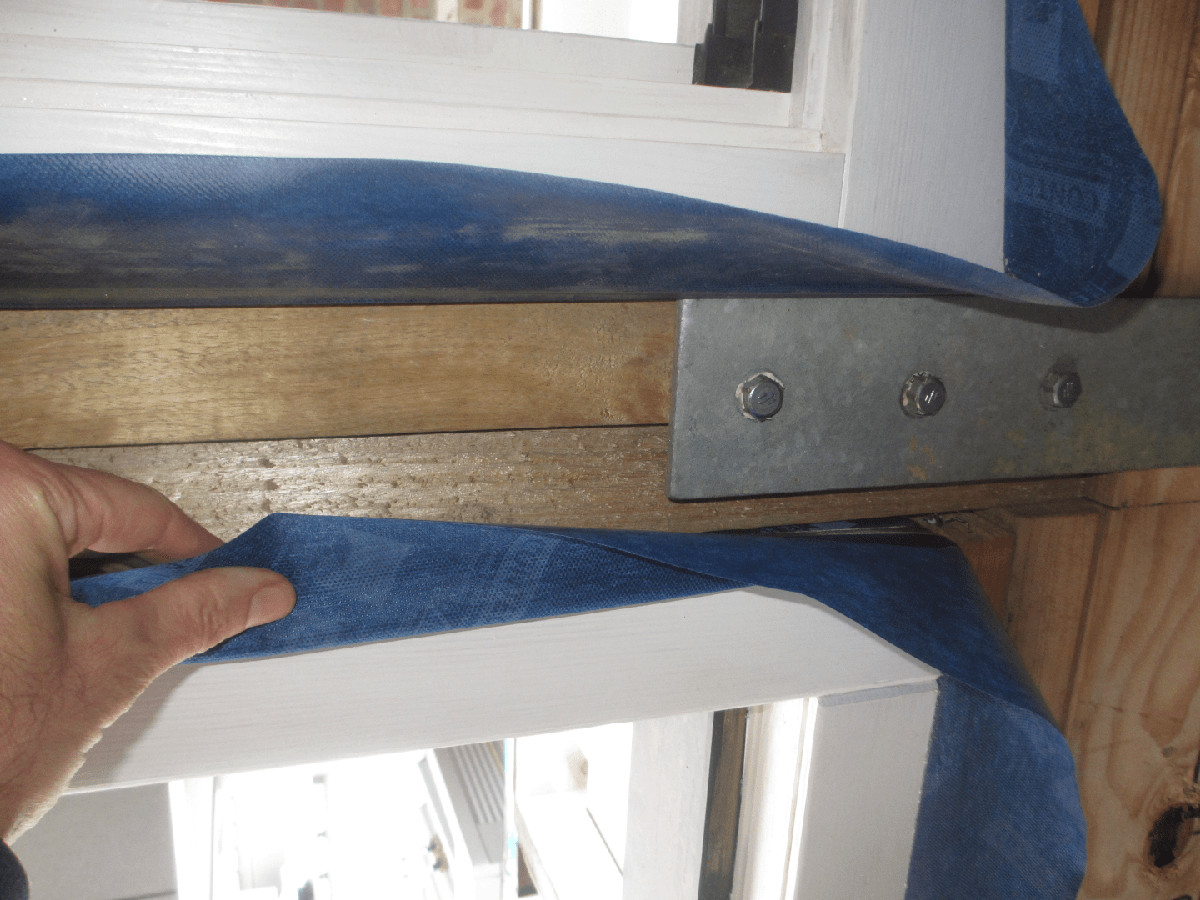
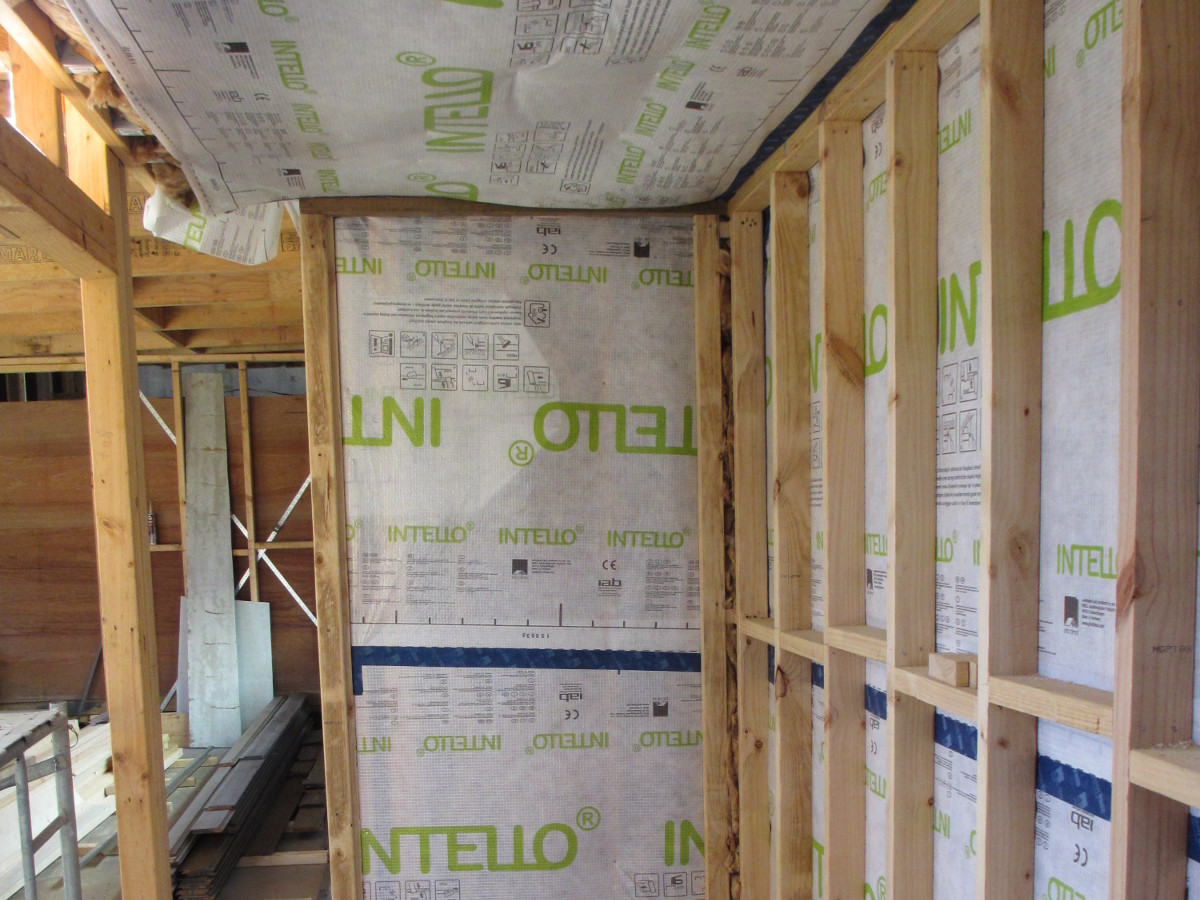
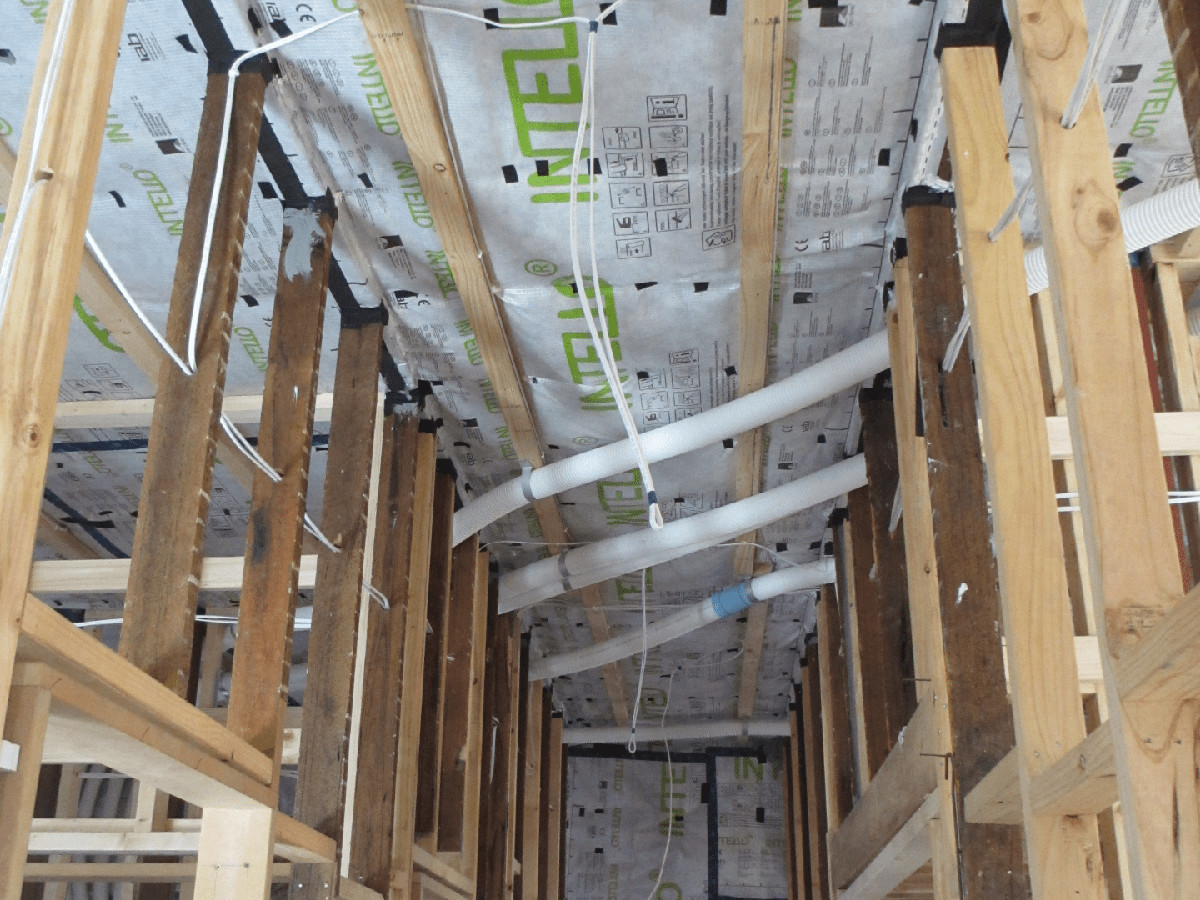
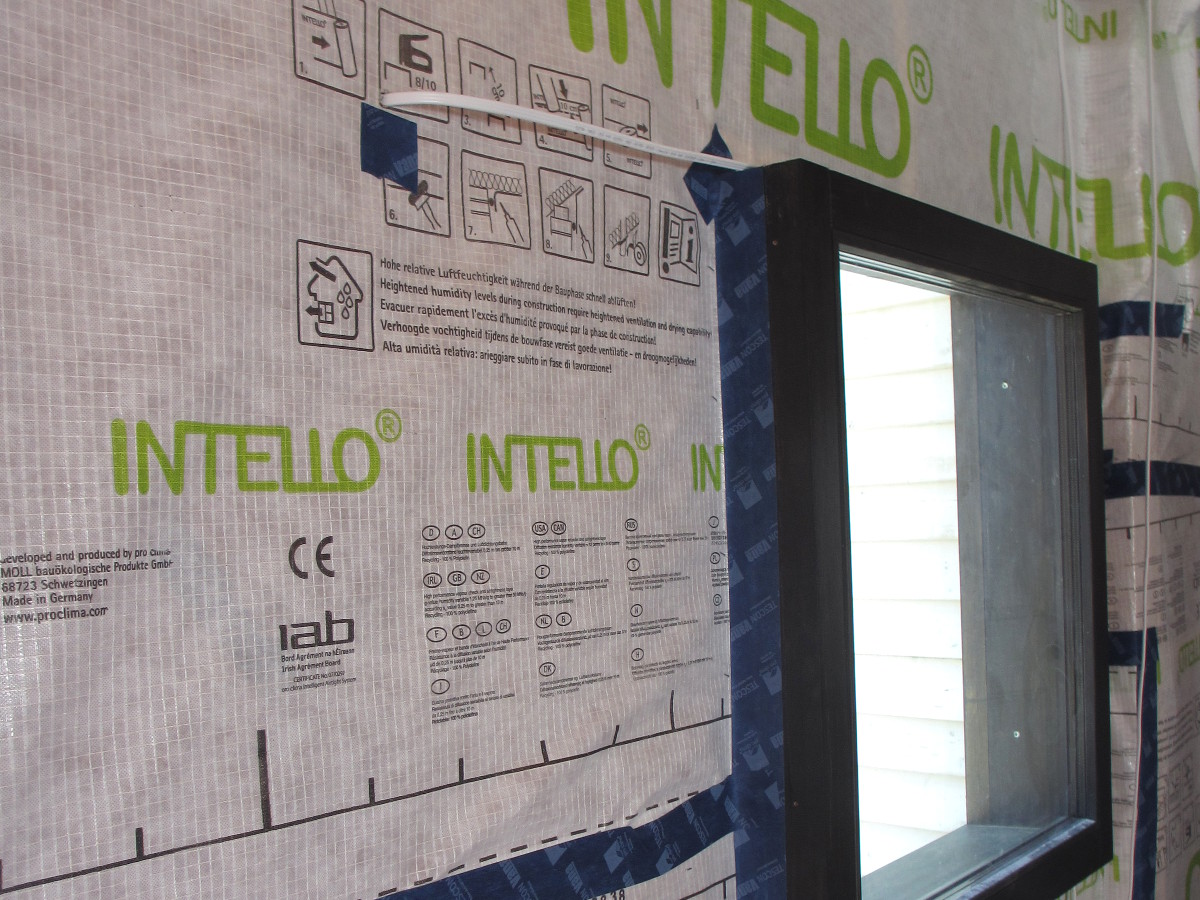
4.2 Measuring airtightness
Airtightness is measured using a blower door test. In this method the building is fitted with a fan, usually in a door opening, and the building is both pressurised and depressurised. This is an incredibly insightful test; we very quickly found issues during our testing which would never otherwise become evident.
Figure 7: Blower door testing


The first test occurred after the membrane was installed but before the internal linings were added. The initial test result came in at around 7ACH50, which is barely better than a well-built conventional home. It was readily apparent there were several large areas (10 - 20 cm) where the membrane had not been taped. Once these were sealed the test result rapidly improved to around 3ACH50. Over the following week visual inspection and fixes produced a result of 2.2ACH50, which then improved over the course of a days’ work with the home pressurised and five people to 1.2ACH50. A third test several days later produced only an incremental improvement from 1.18 to 1.13ACH50. Finally, after internal linings were installed and the home was functionally complete 1.20ACH50 was achieved. The slight deterioration in performance is largely attributable to the reduction in internal volume that accompanied the installation of the internal linings. The key messages here are that:
- even with due care and attention it is easy to overlook very substantial gaps,
- blower door testing is essential to identify these gaps, and
- it becomes very difficult at extreme levels of airtightness to identify small and diffuse gaps.
Figure 8: Improvement achieved on airtightness during construction

4.3 Mechanical ventilation
When airtightness drops below about 3.0ACH50 mechanical ventilation of the building is necessary to maintain a healthy air quality. The ventilation system performs two functions:
- it provides constant, regulated and filtered fresh air, and
- it recovers heat from exhaust air and uses this to heat incoming cool air (in winter).
The ventilation system runs constantly and uses about 50W, which is tiny in the context of the total home electrical load.
Figure 9: Mechanical ventilation and heat recovery unit
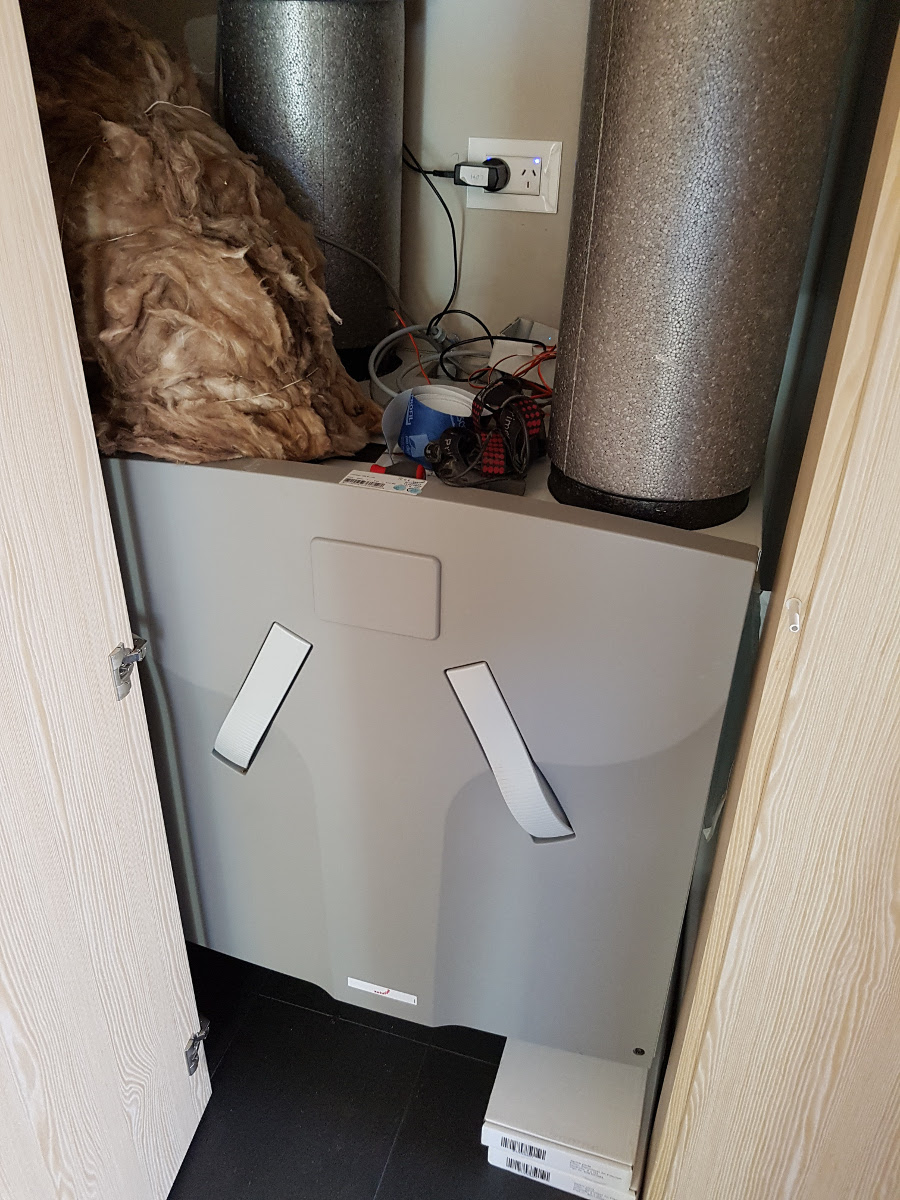
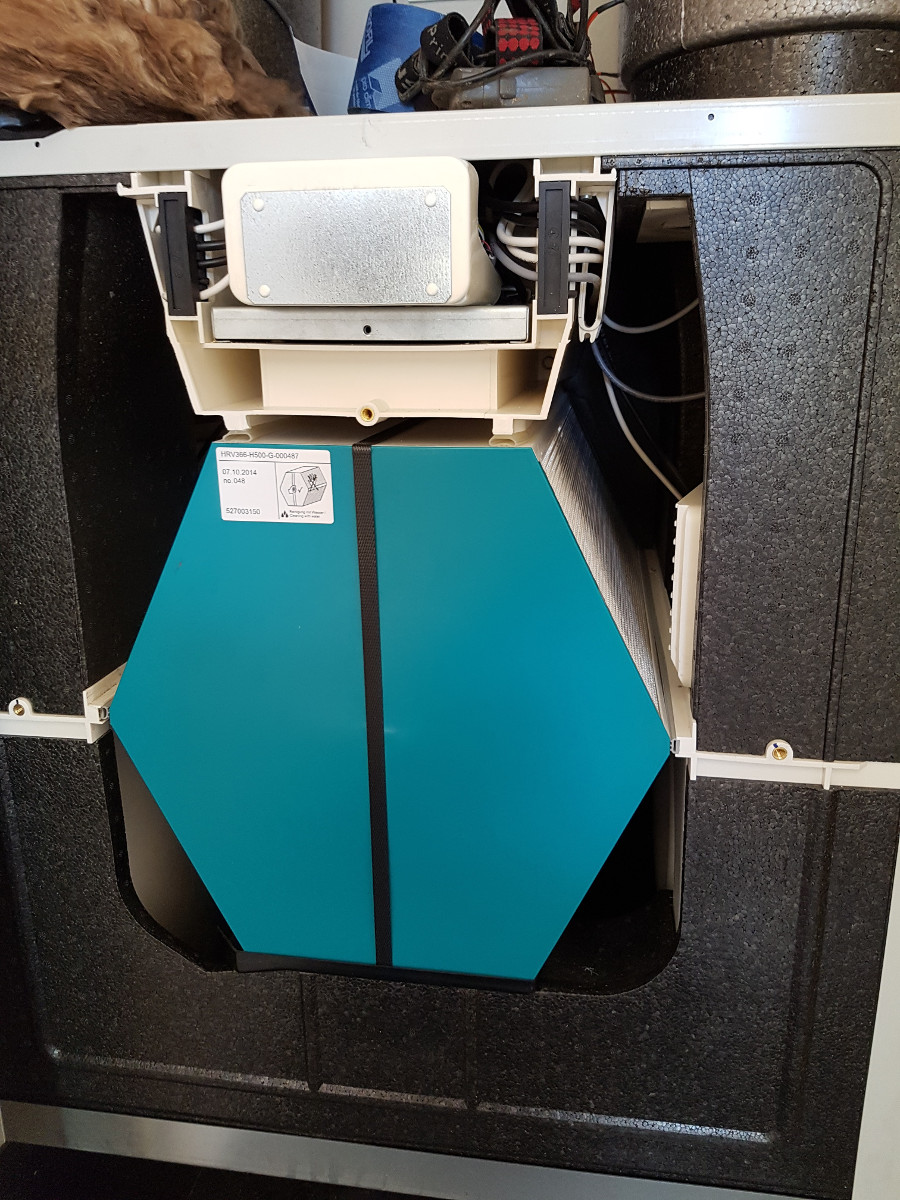
Figure 10: MVHR ductwork
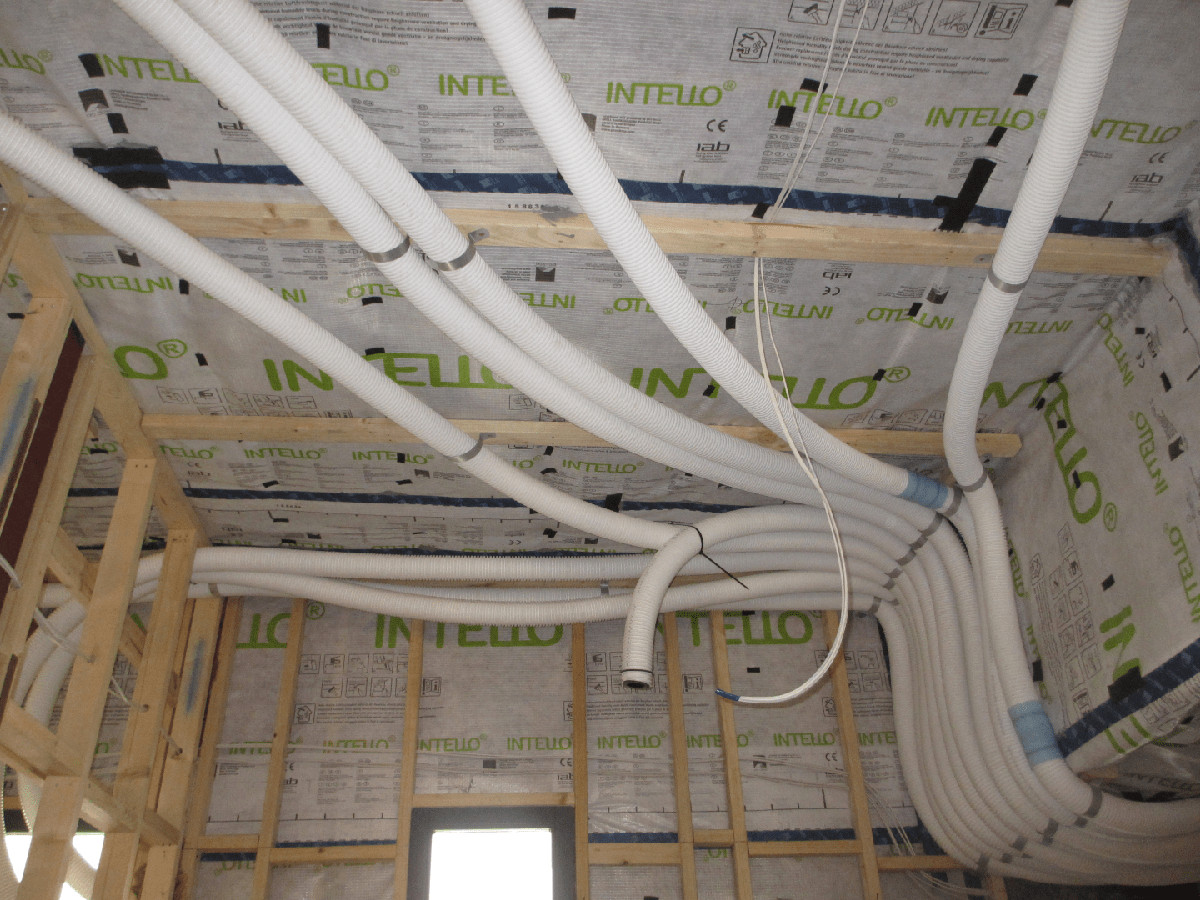

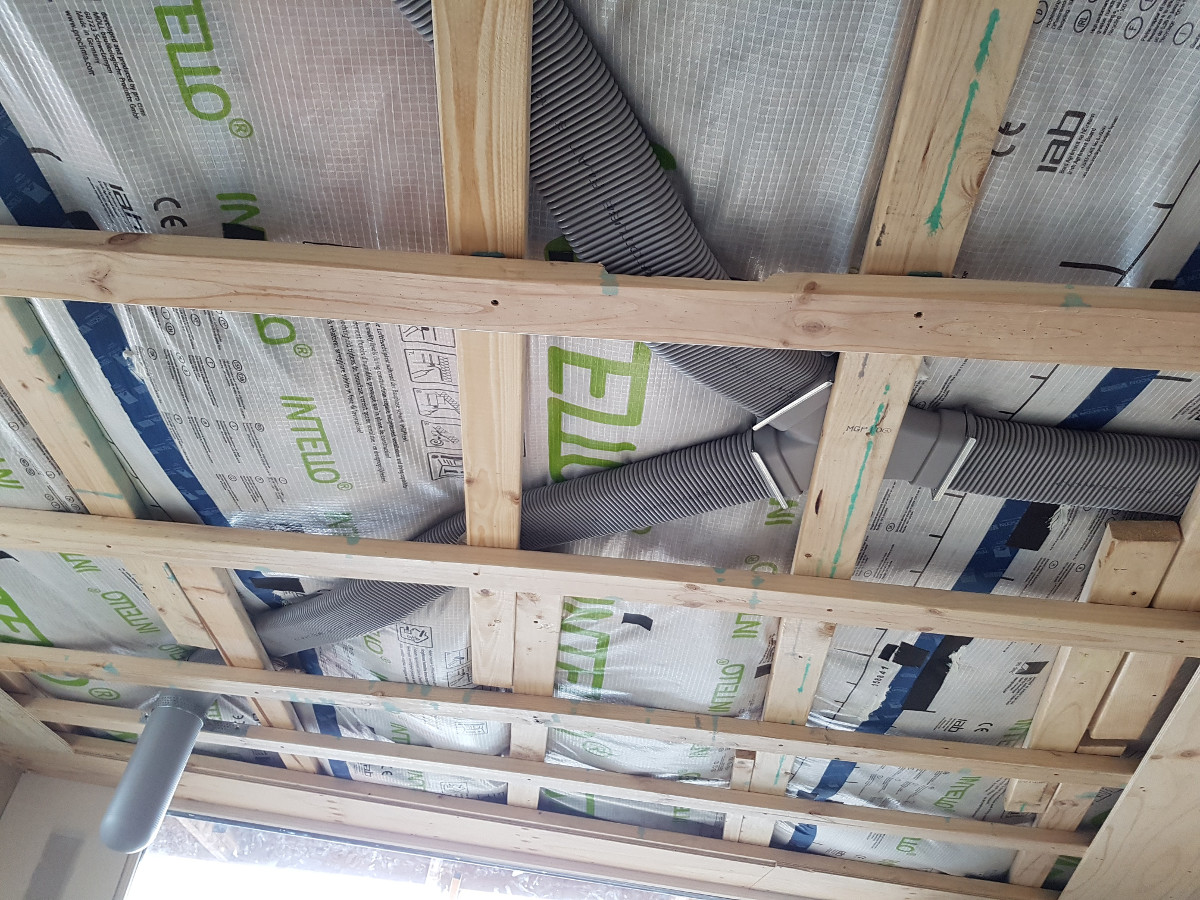
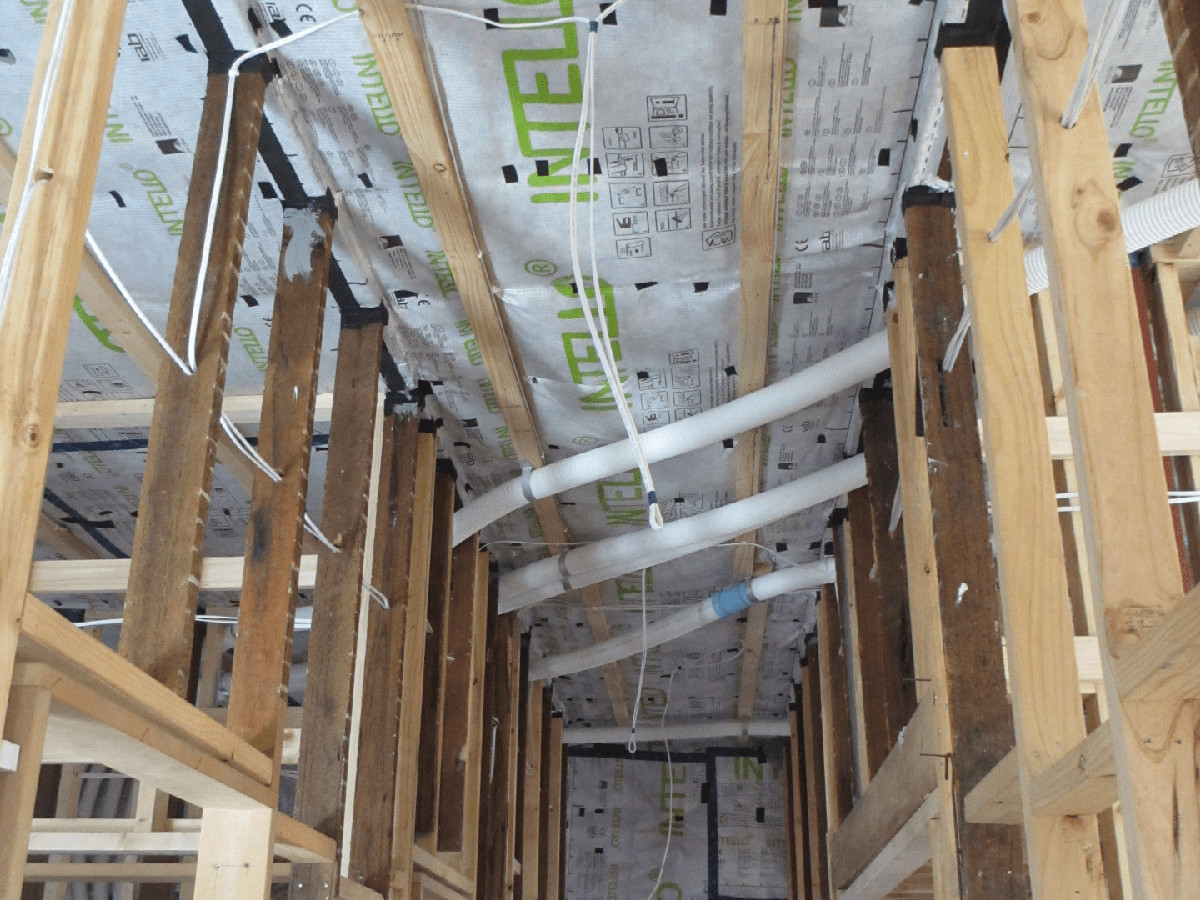
Figure 11: Duct temperatures in MVHR across a typical day
It may seem incongruous that an energy efficient home would require the complexity, cost and additional electrical load associated with mechanical ventilation. However, in a conventional home we rely upon poor construction practices (i.e. leaks) to naturally ventilate our homes. We have no means to control this leakage, aside from opening windows, and it will vary with wind conditions in a way which is entirely beyond our control. Mechanical ventilation redresses all of these shortcomings:
- it provides a definitive, controlled regulation of fresh air into the home, and
- it captures the heat in the air that is being extracted and retains it within the home.
Moreover, there are secondary benefits - for example, the air coming into the building is filtered so there is reduced risk of allergies and less dust to move around the home.